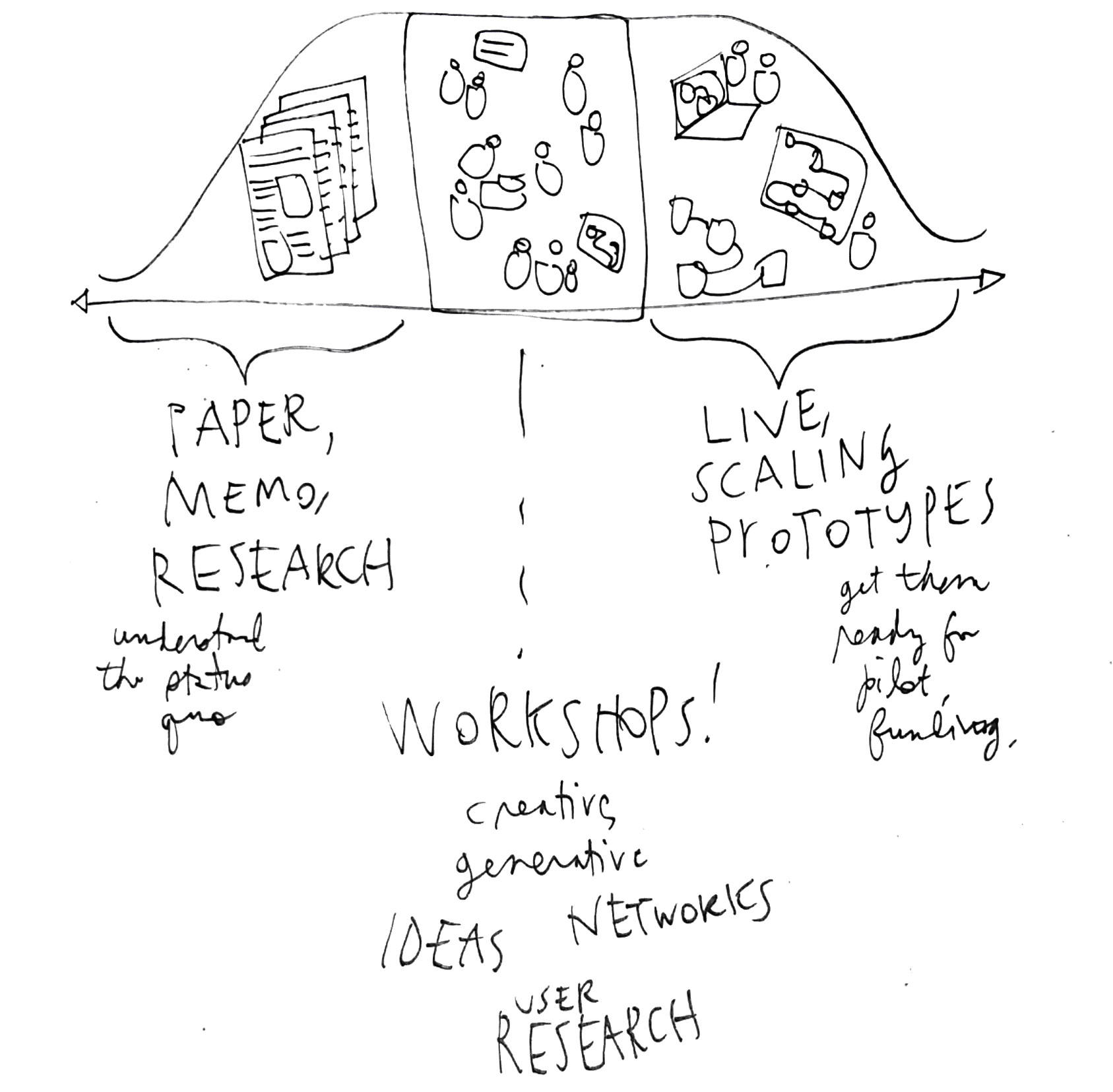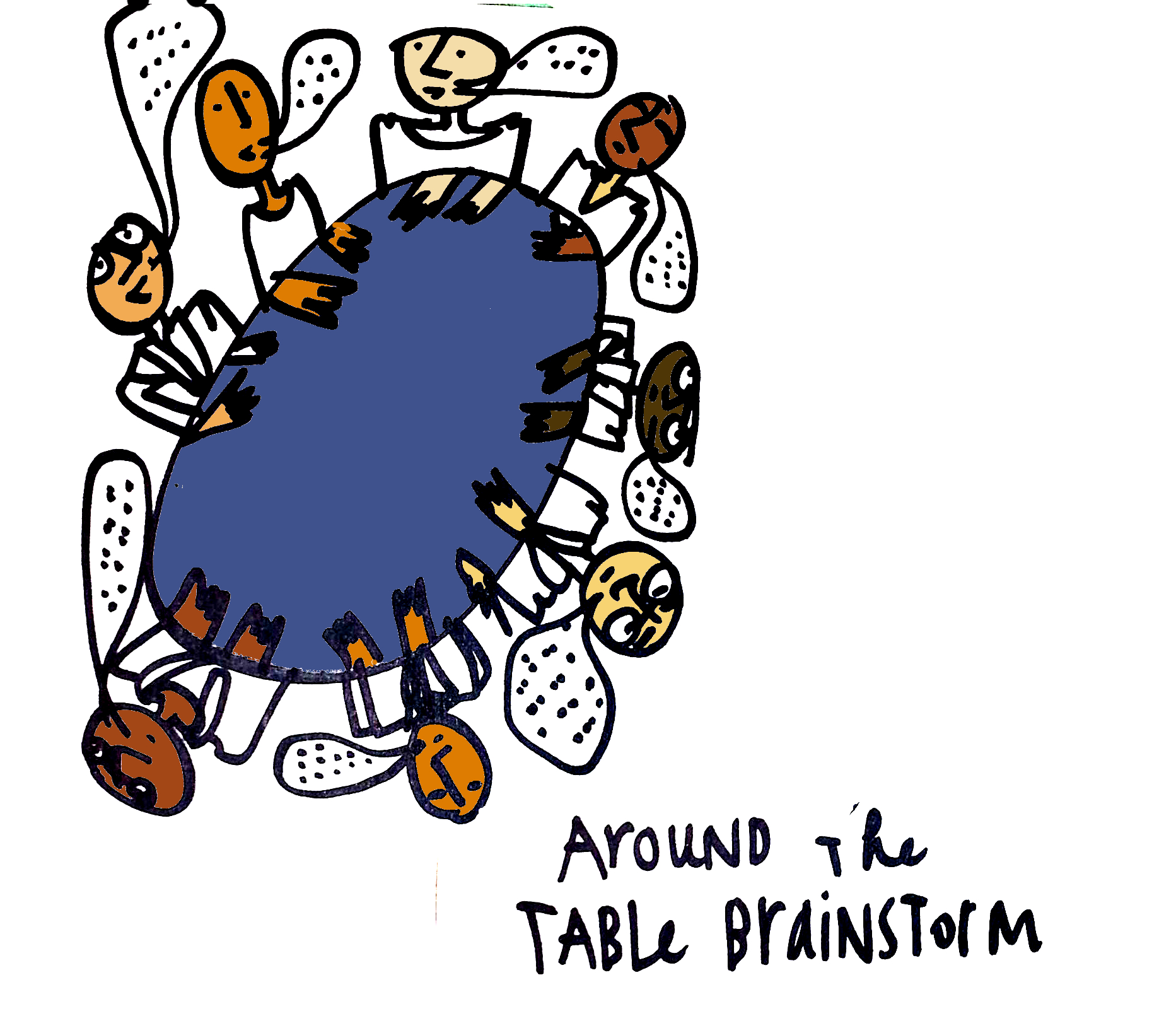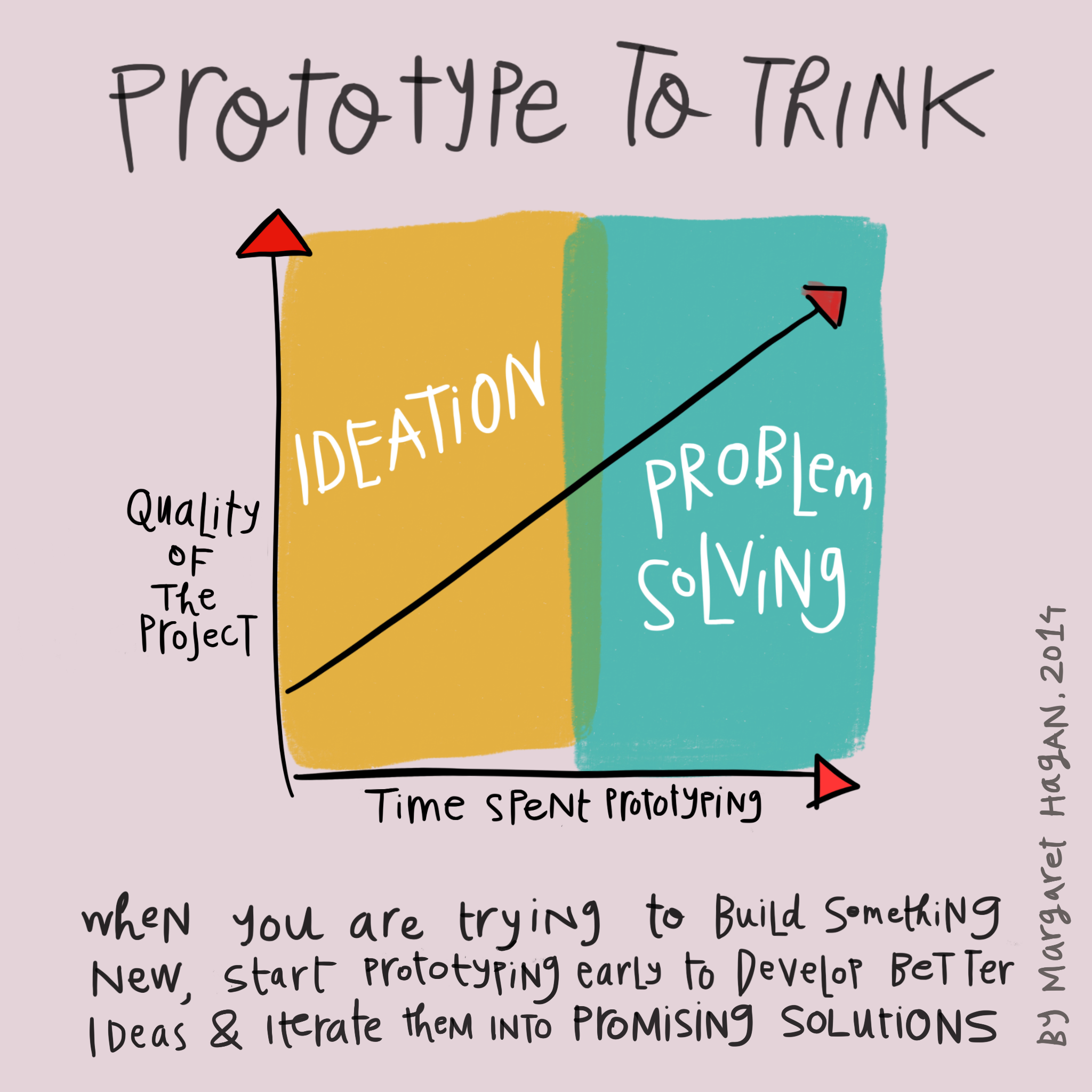This school year, my priority is focusing on how to take the design process & adapt it to create research outcomes that are meaningful to the academic community — as well as to practitioners.
The most direct adaptation is to extend the current style of design process I’m using, and then add on more research-driven pilots after the concept design has been created, in order to get stronger results — with both quantitative and qualitative markers — about the outcomes of the intervention.
Another approach came from a conversation I had with the De Justicia team, who are planning out a Human Rights Lab to promote more experimentation and innovation in the world of human rights policy and advocacy. They’re talking about how to plan for design work that will lead to real implementation on the ground. How can we get from facilitating ideas to actually seeing change?
Their team has come up with a very compelling 3-part structure to tackling a challenge of getting to results, while still drawing from the current state of research and producing respectable results.
Here is my sketch of its: it starts off with (stage 1) background research into the challenge area, which lays the ground for (stage two) design sprints and workshops in which key stakeholders are brought together to create promising new concepts, which leads into (stage 3) where the handful of concepts are refined, scaled into pilots that are actually deployed, and used to gather data.
I am excited about this approach because it ground the design work in research, well at the same time prioritizing action and implementation. If makes the design workshops, which I love so much and know can bring so much energy to movement, into a longer and more deliberate plan for change. The research in stage 1 can also ensure the the concepts developed in stage 2 have more potential to be breakthrough.






1 Comment
This sounds very cool, Margaret!